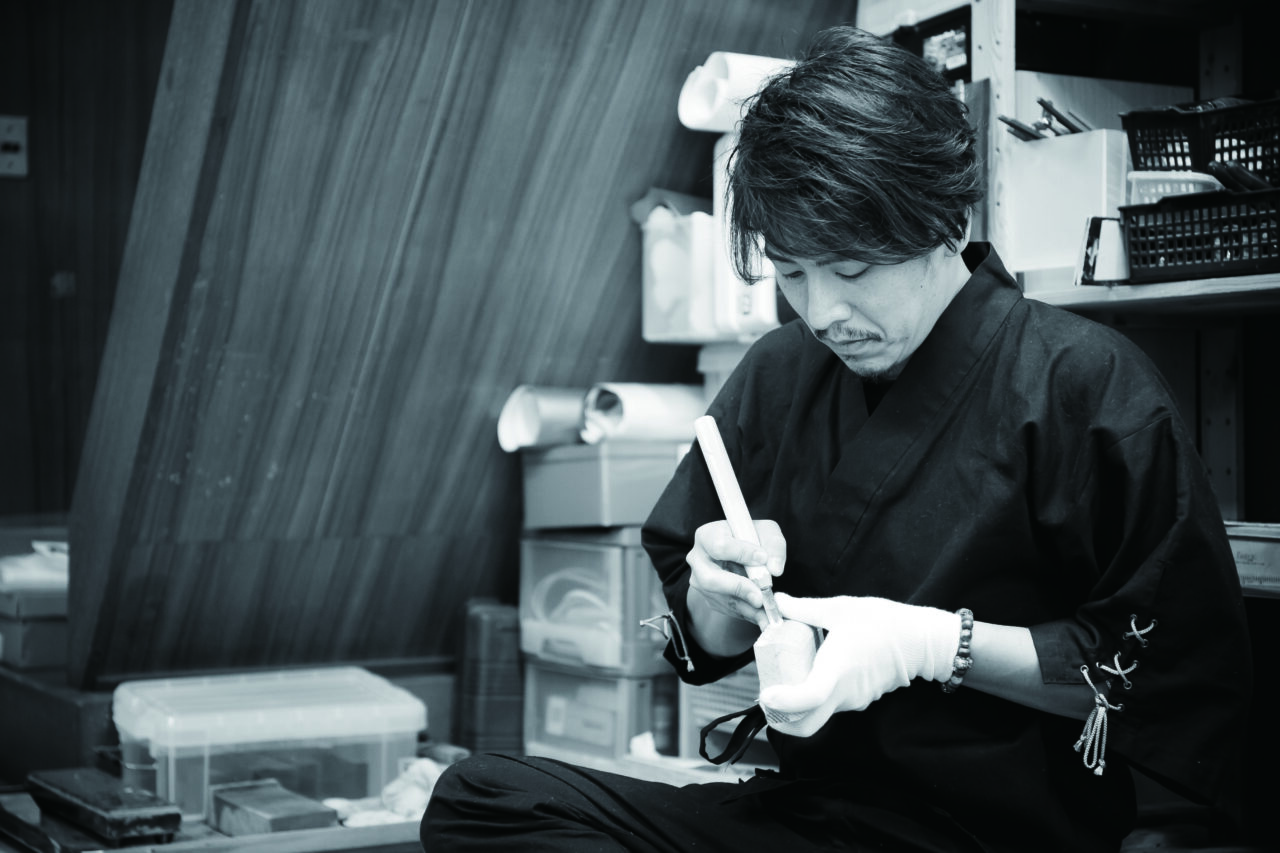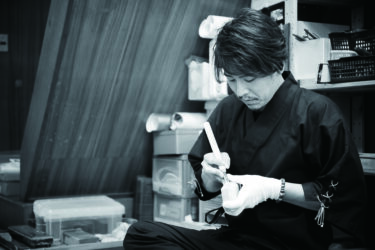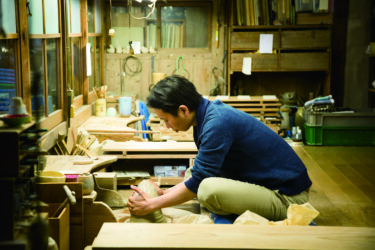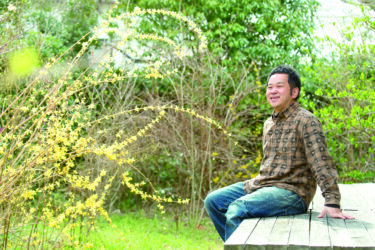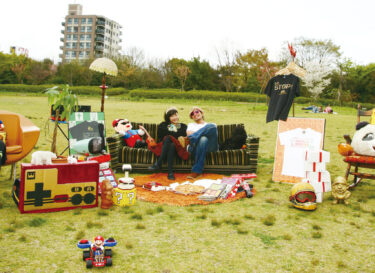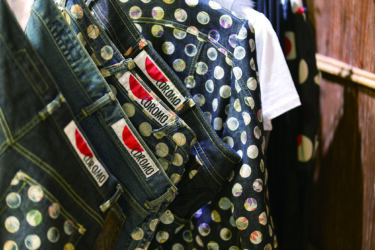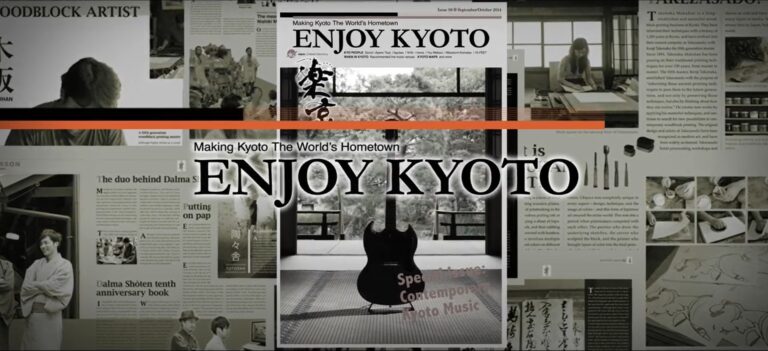We meet two artisan brothers- specialists in carving Buddhist statues and altar fittings before which people offer prayers.
The roots of Tomita Kōgei
Japan is a land of wood. It’s not an overstatement to say that the history of this country has been passed down through this beautiful natural material. Even today, wood is used by the Japanese to create a wealth of items used in daily life, from traditional architecture such as temples, shrines and the town houses in which they live, through to tableware, furniture and toys. A magnificent example of craftmanship in wood are the Buddhist statues and altar fittings central to the religion. These objects are symbolic gateways, through which beleivers offer prayers and channel their messages to the divine.
Brothers Ju’un and Mutsumi Tomita are Kyoto-based artisans of Buddhist icons. Ju’un crafts statues, while Mutsumi specializes in mortuary tablets. Together they continue their work as “evangelists of wood”, handing down traditions to future generations of this country of wood, Japan. Starting with a square block of wood and a small blade, the highly-skilled pair carve a variety of religious items, such as statues of the Buddha and mortuary tablets for use in Buddhist rituals. Watching the men work with their adept yet natural touch, it’s as if they are simply digging out hidden statues from the sand, rather than carving them from wood.
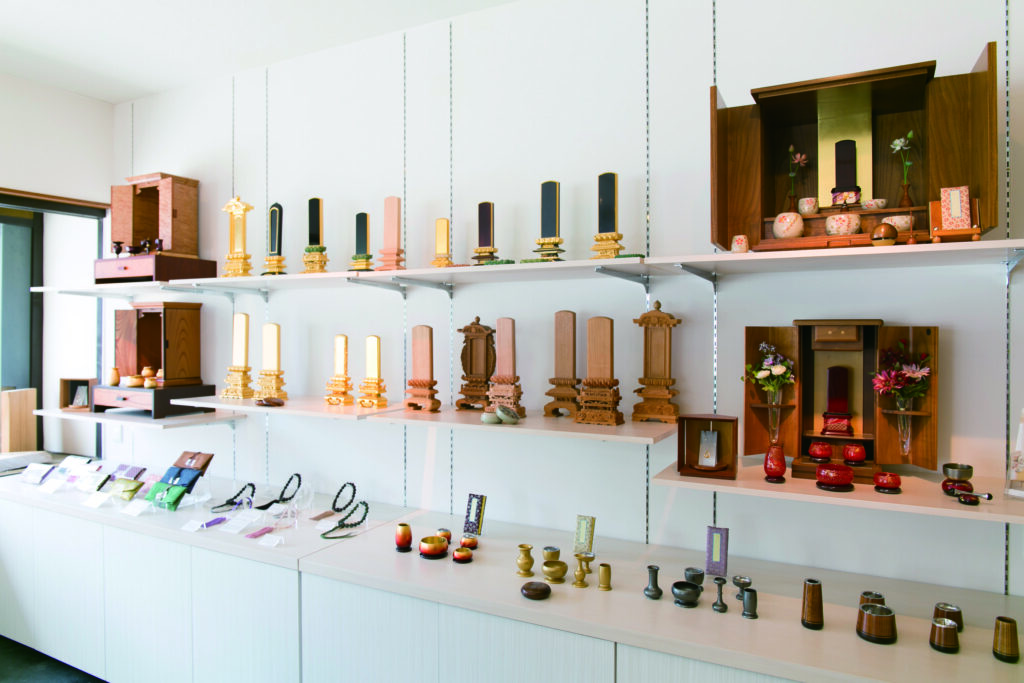
Ju’un and Mutsumi are the current, third generation masters of the Tomita Kōgei workshop, which was established by their grandfather in 1935. Tomita Kōgei was founded in the Tajima region of northern Hyogo Prefecture, around 130 kilometers north-east of the city of Kyoto. Near the Tajima area is Miyazu, a city in Kyoto Prefecture known for its many highly-skilled miyadaiku- carpenters who specialize in building and repairing shrines and temples. Some of the miyadaiku put their carving skills to use crafting and selling Buddhist altars, or as restorers.
One such miyadaiku was the Tomita brother’s grandfather. After setting up the business, he went to serve in the Second World War, returning with a lame foot. The Tajima region was suffering from the ravages of war, and life was tough. In 1965, the grandfather made the decision to take his son Mitsuru, then in his late twenties, and move to Kyoto, where production of Buddhist statues and altar fittings flourished.
The third generation
It was around 1990 that events lead the brothers to choose their current path. The older brother, Ju’un, was sixteen, and Mutsumi thirteen. During their summer holidays, the two carved their first statue, a god called Daikokuten (the god of wealth). Although their father had the boys help regularly with his work, this was the first time they had carved anything by themselves. The two experienced a new kind of thrill from the experience, and felt a desire to carve more. That was perhaps the moment they were instilled with the artisan’s spirit.
There was one immutable rule in the Tomita house- the boys were not permitted to go out to play until they had sharpened their father’s tools. Although on the surface this was a version of helping with the household chores, it was actually a clever trick of their father Mitsuru. Care of one’s tools is the most basic of all of an artisan’s skills. All craftsmen begin their training by mastering how to sharpen their tools, a skill that takes years. Under the guise of helping the family, Ju’un and Mutsumi had actually already been training to become craftsmen while they were still students.
“We both learnt the basics while we were still at school, so as soon as we graduated we were able to help with the work of our father, who is also our master. We’re now in the position of taking on apprentices ourselves, and naturally the first thing we make them do is sharpen tools. That’s why we were mastering it while we were still at high school. It’s an enormous part of our work,” says younger brother, Mutsumi.
After high school, the brothers helped their father while also studying at university. Ju’un attended Otani University,while Mutsumi went to Hanazono University, both Kyoto-based Buddhist institutions. Most people aiming to become craftsmen choose to attend fine arts universities. So why didn’t the Tomita brothers take this path? The reason is quite clear. The Buddhist statues and altar fittings that the brothers create are used in temples and homes for Buddhist rituals. Therefore, Mitsuru believed it was imperative for his sons to have a proper understanding of the religion.
The brothers, only two years apart in age, continued to help in their father’s workshop while at university. The workshop consisted of one room, just three tatami mats in size. Confined to the small workshop and without contact with the outside world, the brothers spent this time carving in silence. In the manner of Buddhist monks sitting in meditation and achieving a state of nothingness, their training was a kind of communication with the spiritual world, through the materials, skills and tools.
Apprenticeship, then independence
The Tomita brothers graduated from university and immediately began full-fledged training. As they became more adept at their work, little by little they also begin to question their situation. The objects they made were supplied to Buddhist altar shops through a wholesaler. In other words, they were subcontractors. This situation was standard practice in the industry, but it meant that the brothers were unaware of which temples their statues and altar fittings were being supplied to. When asked by an acquaintance where their statues could be seen, they could only reply that they had no idea. The brothers gave the situation much thought. Since Buddhist statues and mortuary tablets are sacred objects for receiving people’s prayers, is it acceptable for an artisan to not know where and by whom the object will be used?
Concerned, the Tomita brothers decided to stop supplying their work under this system. Their father did not opposetheir move, but rather encouraged them to do as they saw fit, since he was uneasy about the system himself. The brothers felt that they would not survive without adapting to modern times. And so in 2005 they left their father’s business and set up their own workshop in its current location at Gojo Ohashi Higashizume. As the new generation of Tomita Kōgei, the brothers work directly with temples and Buddhist altar shops, and communicate face to face with their clients.
Ju’un : carving beauty and glory
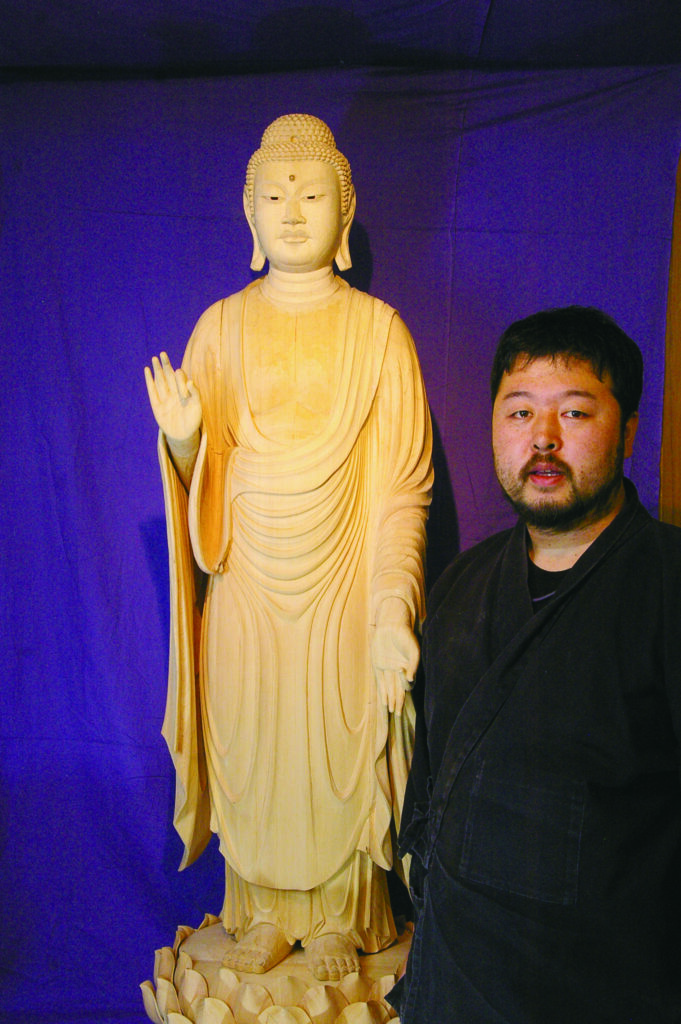
Born in 1975. Buddhist statue sculptor. Ju’un primarily work is in Buddhist statues and icons ordered by temples.
Traditionally, sculptors of Buddhist statues are referred to respectfully as sensei, and are distinct from shokunin (craftsmen) of other Buddhist items. Of the two, sculptors are considered to be the more prestigious vocations. However, Mitsuru taught his sons differently. “Statues and altar fittings are the same work. There’s no difference between a statue sculptor and a craftsman. You two mustn’t make any distinction between the two.” Having experienced both lines of work, Mitsuru was well qualified to rule on this. At the time, nobody was interested in statues carved by someone with the title of craftsman. Only work by sensei with the title of ‘Buddhist statue sculptor’ were accepted.
Elder brother Ju’un decided to concentrate solely on making statues, and his career as a professional sculptor began. A man of few words, Ju’un’s resolute personality sits well with the title of Buddhist statue sculptor. Each of his works invariably begins with the same process. When working on a new sculpture requested by a temple, he starts by having the temple priests look at the wood. He has the priests visit the lumberyard with him to watch the log being cut. Ju’un finds out all he can about the temple’s needs before selecting the most appropriate piece of wood.
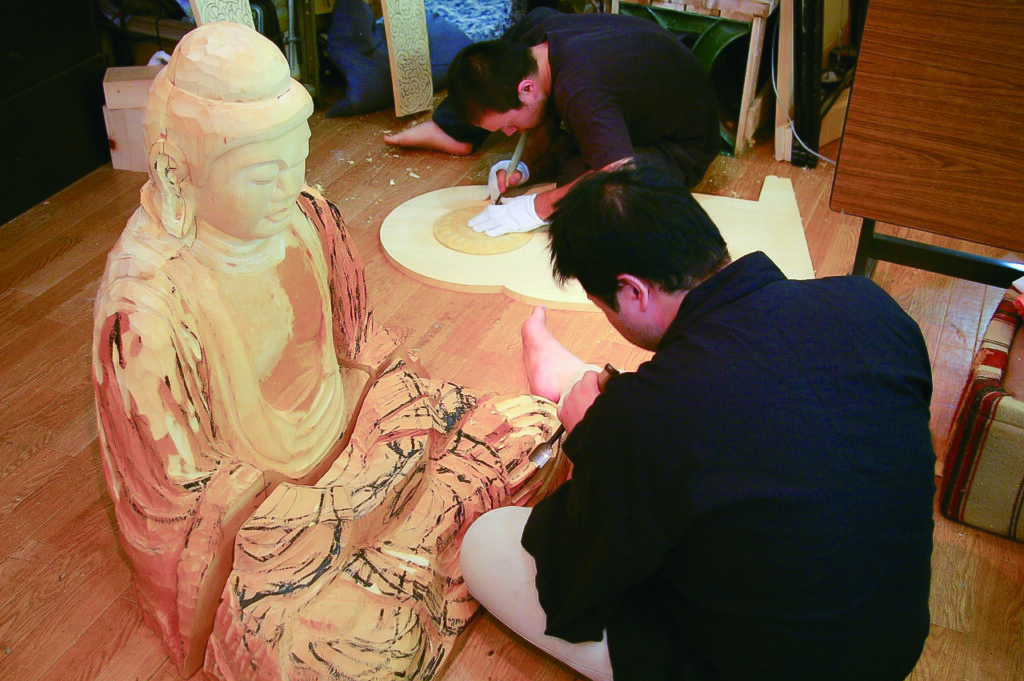
Once it arrives however, he doesn’t begin work on the statue straight away. After the piece of wood has been cut, it takes two years for it to dry completely. If not properly dried, the wood will crack. “We can’t wait two years.” is something he has heard from customer more than a few times. His method of persuasion is always the same: “How many years do you intend to pray to this Buddha at your temple? Ten years? One hundred years? Or perhaps one thousand years?” A Buddhist statue is not simply a statue made from wood. It is a symbol of prayer that will be prayed to by countless people over an immeasurable period of time.
Over the years, the hopes and wishes of the people are amassed in the statue. It’s not simply a matter of replacing it when it breaks. Ju’un is making something sacred, in front of which countless people will put their hands together and offer prayers, long after it has been supplied to the temple and even after his own death, and so Ju’un believes it must be done with absolute care and devotion. A wealth of Buddhist statues carved by famous thirteenth century sculptors such as Unkei and Kaikei exist to this day in Kyoto. Millions of people have clasp, closed their eyes and offered a prayer to these statues for close to 800 years.
Ju’un is determined to produce pieces that might stand up alongside the great works of Unkei and Kaikei. And above all, Ju’un’s desire is that he too can be of service to people, by sculpting icons that provide a source of peace and a focus for prayer. Although he feels he’s not helping people directly, through creating beautiful, valuable items, he hopes to bring peace to people’s hearts, and to the world around him. This philosophy has in turn sparked another great ambition. “One day we’ll build a new giant statue of Buddha in Kyoto, for the new era. I want to be the one to make it.” Perhaps this visionary statue will be one that people are still praying to one thousand years from now.
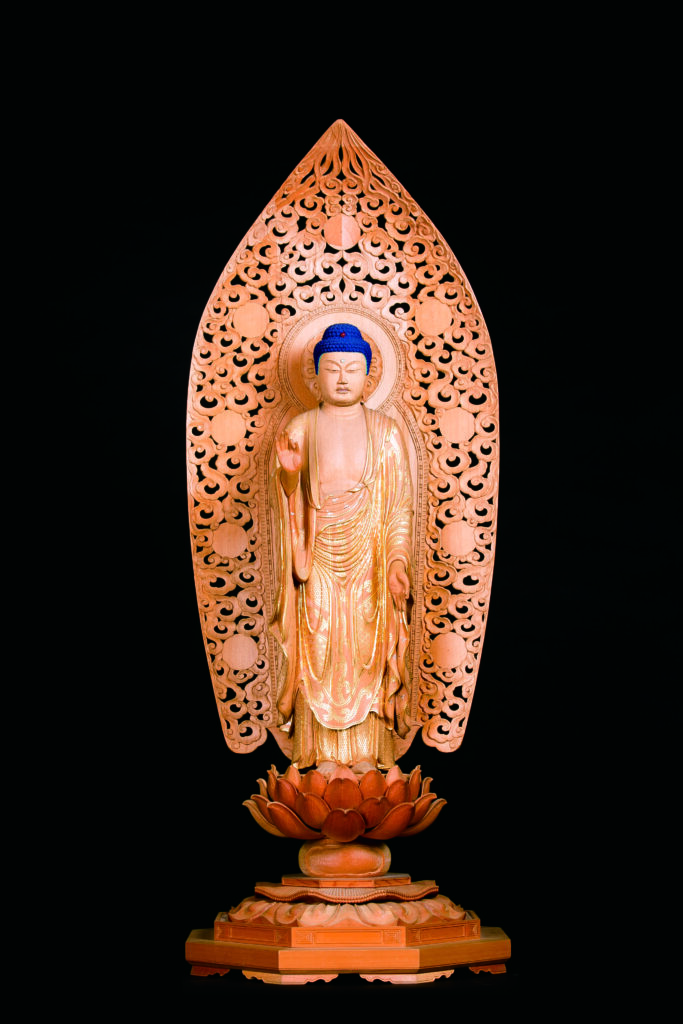
Buddhist Icons
Amida Buddha Statue (property of Tomita Kōgei)
Body: approx. 60 cm, Overall height: approx. 125 cm
The principal image of Buddha for the Jōdo sect, and one of the most worshipped bodhisattvas in Japan. Made from the highest grade of Kiso cypress parquet, the clothing section of this statue is decorated with kirigane (extremely thin gold foil)
Mutsumi: crafting elegance for eternity
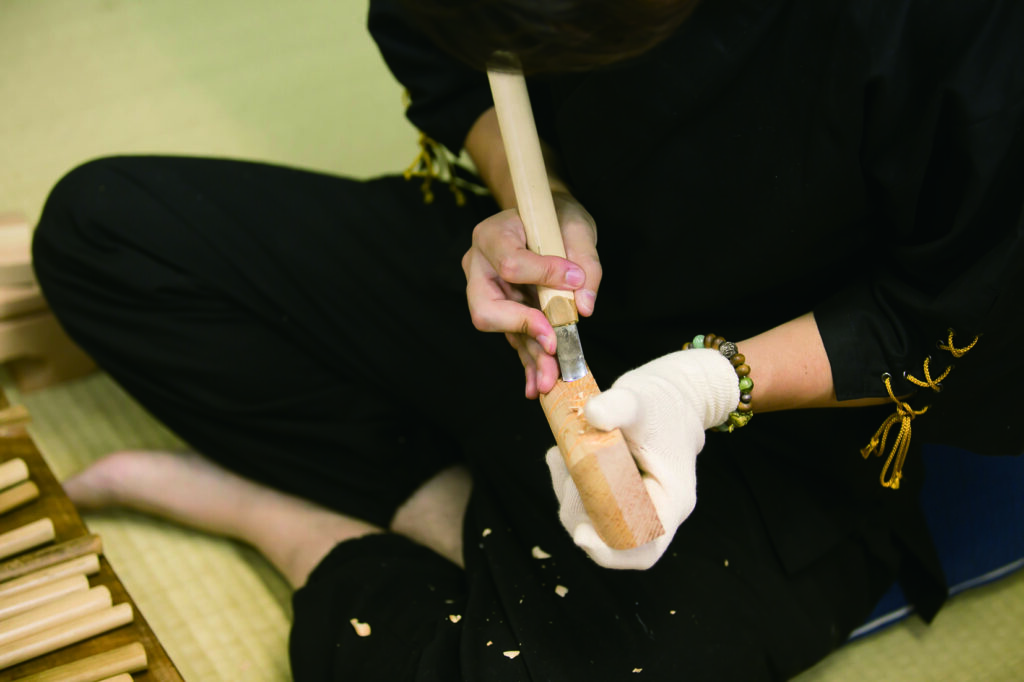
Born in 1978. Kyoto mortuary tablet sculptor. His main work is creating mortuary tablets and other altar fittings requested by temples, as well as orders for the general public.
Younger brother Mutsumi’s main craft is altar fittings, primarily mortuary tablets. A mortuary tablet is a wooden plate denoting the posthumous Buddhist name of a deceased person. These items are used in funeral rituals, and it is said that this naming represents the deceased having become a full disciple of Buddha. While various types of mortuary tablets exist, in general they are produced through several key steps, including carving decorative patterns, then applying varnish and gold leaf. Each stage requires a high level of skill.
Even today, in the majority of Japanese homes, when a family member passes away daily prayers are said at a Buddhist altar, on which a mortuary tablet is displayed. The mortuary tablet has a symbolic existence as the vessel that houses the spirit of the deceased. Their widespread use means that mortuary tablets are commonly mass produced. For this reason, there has been a tendency for the job of crafting them to be held in relatively low regard in the Buddhist artifact industry. Mutsumi found this difficult to comprehend. “Why is a statue sculptor called a sensei while a mortuary tablet artisan is considered inferior?” There was a reason for his frustration. “In fact, mortuary tablets are more difficult to make than statues.”
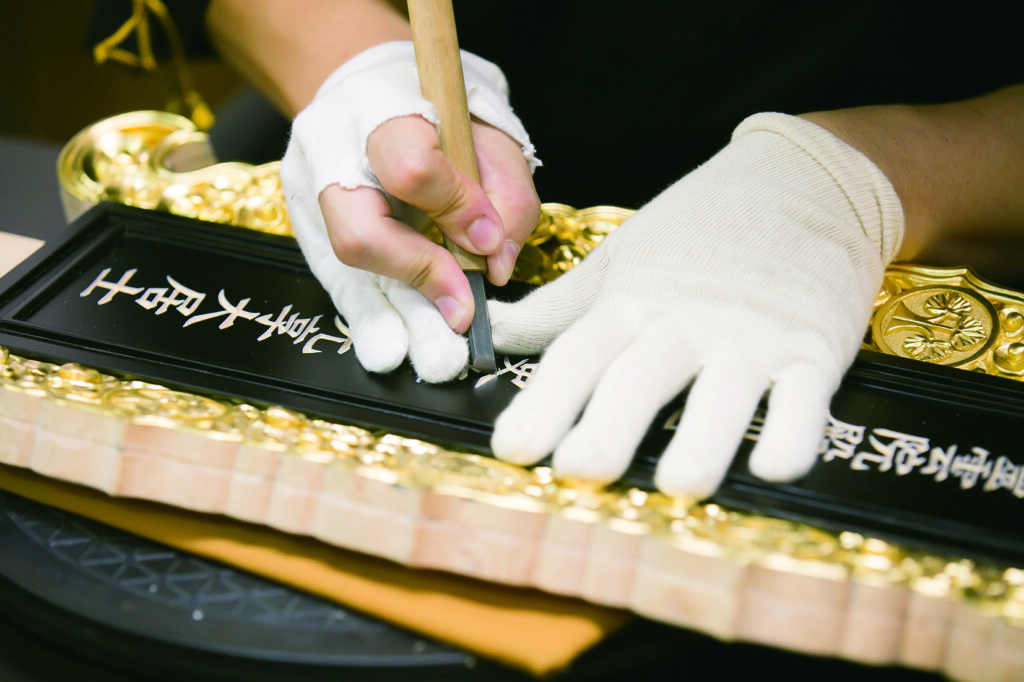
In Buddhism, there are only two items that people pray to- one is a statue and the other is a mortuary tablet. “Regardless of the status of the work, I decided to craft my mortuary tablets with pride.” Mutsumi made the decision to forge a career as a Kyoto mortuary tablet artisan. With this elder brother specializing in statues, and himself in mortuary tablets, the Tomita Kōgei name would be carried on these two pillars. Everything becomes clear once positions are.
Roles assigned, the brothers were bestowed with their own artist’s names by their father. Elder brother’s artist name Ju’un, incorporates the kanji character for un (cloud), which, being at the top of the sky, represent the pinnacle, and so his specialization in heavenly Buddhist statues. On the other hand, younger brother Mutsumi was given a name featuring the kanji for the word for sea, umi (actually abbreviated to mi), the world which stretches out below the sky.
Mitsuru holds a conviction born from years making mortuary tablets and altar fittings. Namely, in the making altar fittings, which are traditional products deeply associated with Kyoto, one is using techniques that have been cultivated and refined by artisans over an extensive period of time. There is no place for the boasts of the artisan ‘I made that’. Humility is all.
In recent years, however, Kyoto products have been threatened by a trend that completely disregards this way of thinking. A wave of price competition, a demand for “cheaper and quicker”, has surged in the world of Buddhist ornaments, with cheap foreign-made versions, and even products made from plastic, now on the market. Hard as this reality is to accept, Mitsuru is diplomatic. “It takes time and money to prepare something of quality. So products that can be produced easily with cheap materials from overseas are inevitable. I don’t think it’s the the fault of people who choose such products, rather there’s a lack of effort by the industry.”
Mutsumi says “We shouldn’t be dropping the price or lowering the quality of our work, but instead changing the way we sell things.” As an example of this, he has proposed a new type of “living” mortuary tablet”. The idea is to prepare one’s own mortuary tablet while still alive. Since a mortuary tablet is a symbol of the spirit of the deceased, it stands to reason that it should reflect the wishes of that person. Careful consultation should be made with the individual, so that the design and preparation of the mortuary tablet can fully reflect their personality and thoughts on life. Since it’s a object through which bereaved families and friends, and future descendants offer their prayers, Mutsumi’s desire to create tablets that completely . It might just be this kind of progressive thinking that will change the conventional wisdom associated with Buddhist altar fittings.
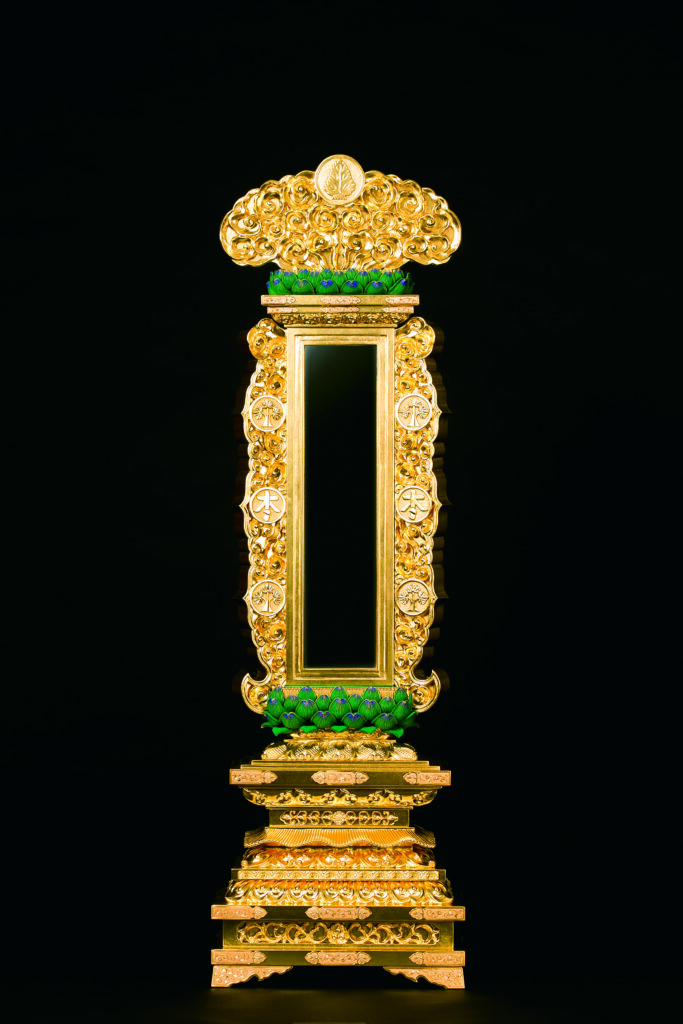
Heavenly Tablets
Overall height: approx. 90 cm
Made from Kiso cypress, and finished with lacquer and gold leaf. Unlike mortuary tablets for general home use, tablets for those of high social rank (such as the Imperial Family and military generals) typically feature highly elaborate carving.
Hopes for the repose of the departed, in Jizo statues
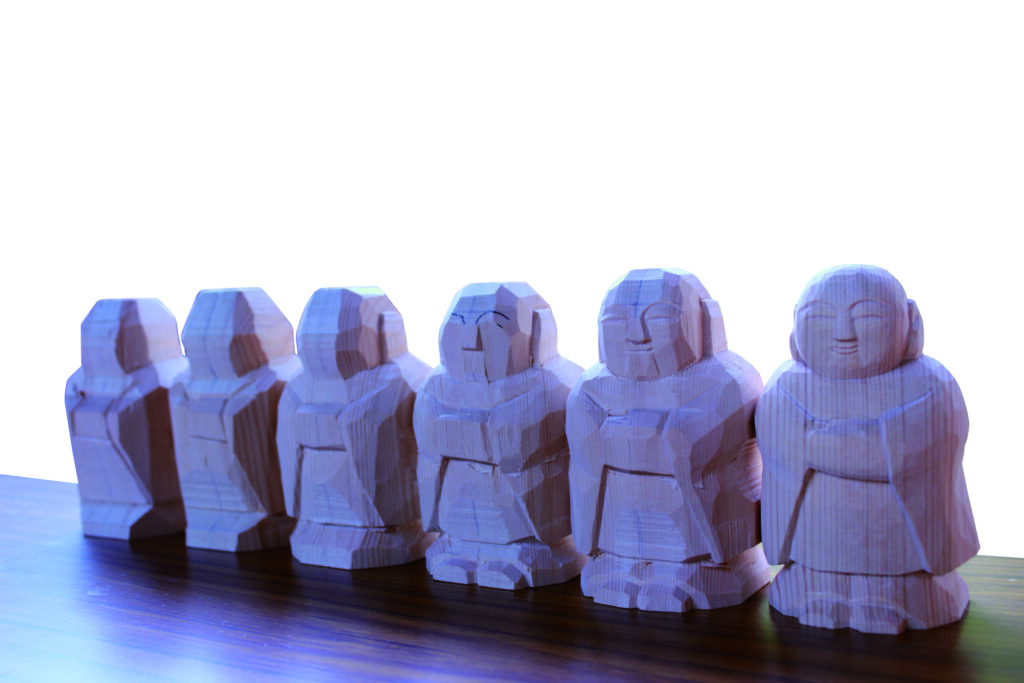
March 11, 2011 saw countless lives lost in the destruction of the Great East Japan Earthquake and ensuing tsunami. Visiting the affected area three months later, Mutsumi was shocked at the extent of the damage. He wondered whether there was anything he could do to help bear the grief of people who had lost so much in the disaster, sorrow too much for individuals to bear on their own. As a result, he began a project called “Warabe Jizo for the affected areas”.
Mutsumi held sessions for volunteers to carve small, palm-sized statues of Jizo (the guardian of children, women and travellers seen by the roadside in Japan). The statues were sent to temples in the affected area where consecration ceremonies were held. The Jizo were intended to repose the spirits of the victims who has lost their lives in the disaster, as well as expressing sympathy to the bereaved families. Carving sessions took place not only in Kyoto, but also the affected areas including Kesennuma, Ishinomaki and Higashimatsushima, as well as Tokyo, Kamakura, Okayama, Fukuoka, and even New York. Several thousand people volunteered to carve the tiny Jizo statues, which were then sent to Zuiganji temple in Matsushima, Miyagi Prefecture, an area that suffered particularly severe damage, and also directly to the victims of the disaster living in temporary housing.
Although the participants in the carving sessions had never held a carving tool before, Mutsumi was a patient instructor. Beginners invariably find it difficult to carve the hard wood, but once they had managed to carve a face, almost everyone compared their Jizo with that of the person next to them. No two faces were the same. Even using the same wood and receiving the same instructions, each face was different. Mutsumi explains “People tend to carve the face that they see most often.” Some resembled the volunteer’s own face, others looked like the person’s husband or wife, their boyfriend or girlfriend, or their children. This is the root of the Buddhist idea of “attachment”. “I think the basis for all religious spirit lies in this attachment,” explains Mutsumi.
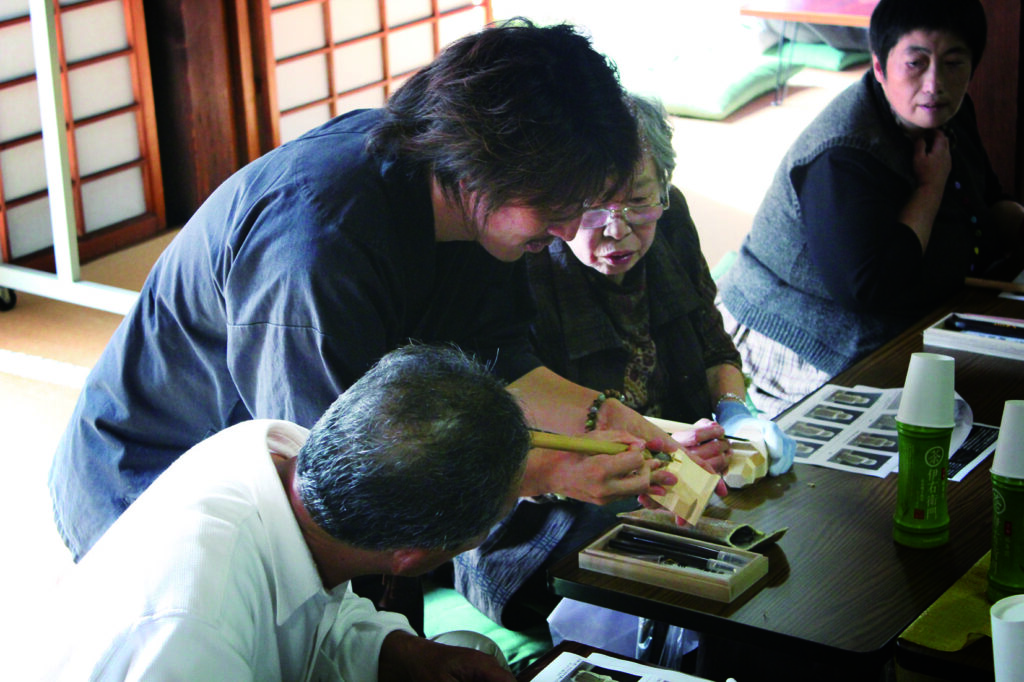
One particular exchange at a carving session left a strong impression on Mutsumi. One of the participants said “I want to take this one home as a souvenir, so please give me another piece of wood.” But Mutsumi replied “No, we can’t do that. But instead, how about putting that feeling of attachment you have for the statue into the statue itself ? That’s the point of this project.” Through these handcarved objects, they would deliver the prayers and thoughts of a multitude of people to those who needed them. The true spirit of the project was in this sense of attachment. The project wasn’t just a matter of sending simple wooden statues. It had meaning and worth because it presented these statues imbued with the feelings of the people who carved them. This is the same philosophy as that constantly in the minds of the Tomita brothers, as they reverently craft their Buddhist statues and mortuary tablets.
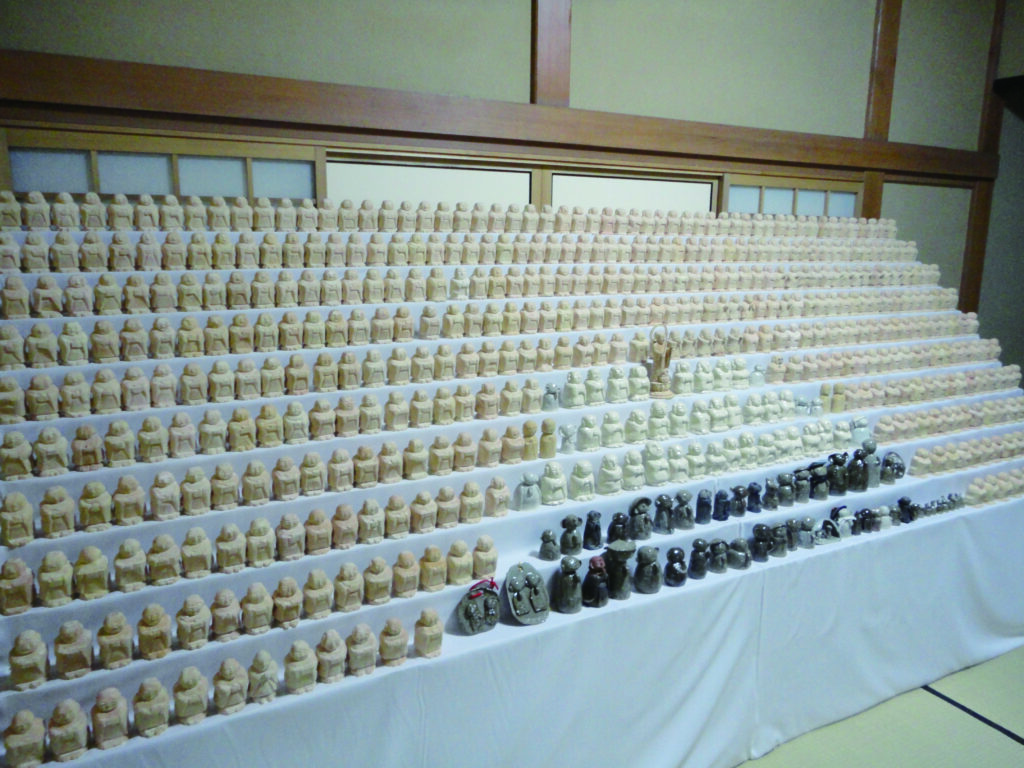
Passing on skills to the new era
Careful distrubution of work and specialised roles has ensured the high quality of Kyoto artisan crafts, and Tomita Kōgei is no different. Each Buddhist statue and altar fitting produced by the workshop is completed in a colloborative chain of work. The brothers are chiefly responsible for carving and creating the items, and then there are artisans who perform other steps in the process, including one for the application of varnish and another for gold leaf. For each step, there is a veteran artisan who has specialized in that particular process for decades, each highly skilled. Each artisan takes utmost pride in guaranteeing the quality of their work. However, there are some difficulties in this traditional method. Since each artisan deals directly with the Buddhist altar fittings shop, there is almost no communication between those in charge of the different steps.

Tomita Kōgei has resolved this issue by taking the leadership role in production, without going through a wholesaler or shop, thus creating an environment where each skill can be fully utilized in the finished product. This open style, taboo in traditional wisdom, is more in step with modern times, and has even provided a stimulus to young artisans. This style of business has also opened up previously-unavailable opportunities to work with metal lacquer artisans, gold leaf artisans and metalwork artisans, which is in turn expanding the possibilities of new altar fittings, and producing demand for various types of artisans.
Additionally, while the lack of a successor is a common problem in the world of traditional arts, Tomita Kōgei has a relatively high number of young people coming to undertake training. When asked about the reason for their workshop’s popularity, the Tomita brothers let us in on their secret: “Lively and fun people work and gather in lively and fun places.”
Continually adopting new techniques opens up new demands for artisans, and stimulates the industry as a whole, at the same time as fostering successors to the trade. “It’s just as important to protect one thousand-year-old traditions as it is to build the traditions of one thousand years from now. When we tell the younger generation that is resting on our shoulders now, they tackle things with a spark in their eyes,” Mutsumi says. Again we see that tradition is not only reproducing the best of the past, but also doing our best in the present to create the future.
Wearable Buddhist accessories
Five years ago Mutsumi launched his own silver accessory brand, Mutsumi, with the purpose of providing young people with a chance to become more familiar with Buddhist altar fittings in some less-than traditional ways. “Even Kannon (the Goddess of Mercy) wears flashy jewelry on her neck and wrists,” laughs Mutsumi. But the craftsman says he didn’t think of such jewelry as mere fashion items. “In the same way that Christians wear crosses, for example, I thought that I could help people understand that keeping items of prayer and devotion close gives one a sense of peace,” he says. People could use the jewelry as objects of worship that can be day to day. To that end, Mutsumi emphasizes that the designs are made to be easily worn by young people, foreigners, and others who do not necessarily have a strong interest in Buddhism. His idea may sound a little unconventional, but even something that starts as an experiment can become a traditional craft product in forty or fifty years time. A deep knowledge of the past past enables Mutsumi to glimpse the future. In the long history of Buddhism over thousands of years, Mutsumi’s latest works are opening a completely novel and unseen domain in the exquisite world of Buddhist religious objects.
Silver accessory brand
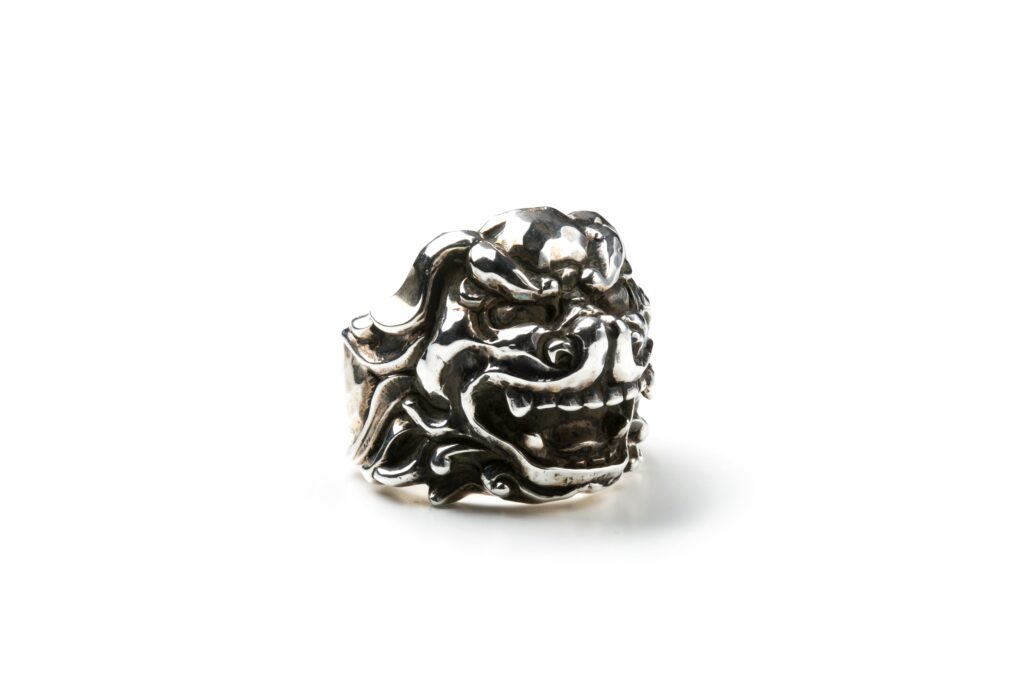
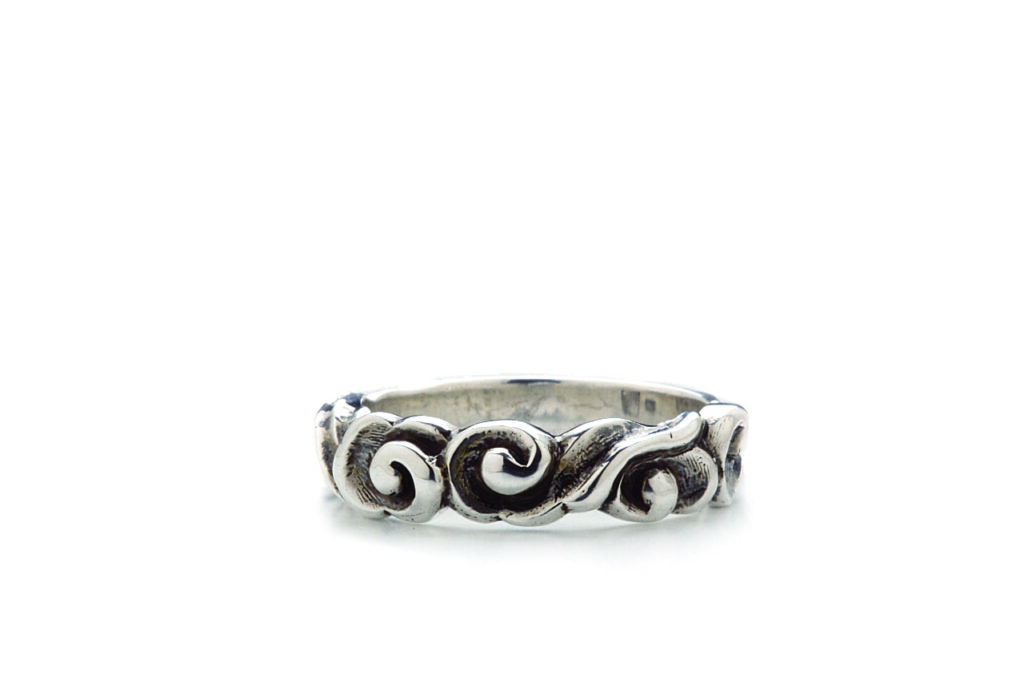
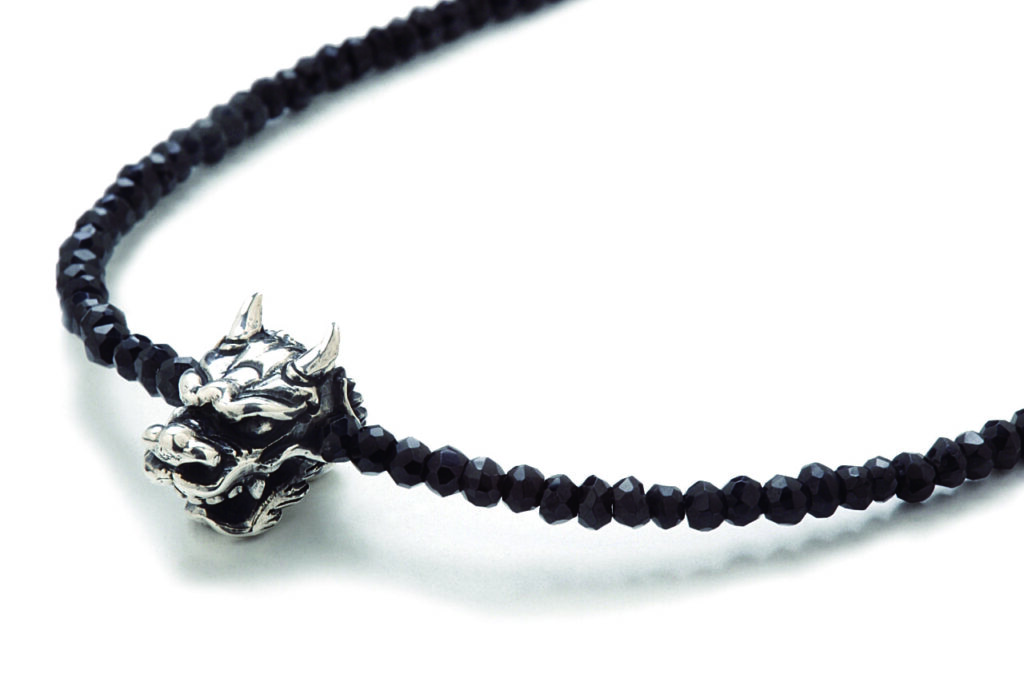
A-un
Silver rings each featuring a lion’s head. In Buddhism, a-un expresses “the beginning and end of the universe”. The lion with the open mouth represents the a type and with the closed mouth, the un.
【A】 ¥54,000
【un】 ¥54,000
Clouds
This auspicious ring features a motif of iridescent clouds. Its impressive and elegant silhouette is crafted using traditional Buddhist carving techniques.
¥16,200
Spinel Dragon
This silver necklace features a motif of a dragon, known from ancient times as a holy deity of protection. The combination of the spinel and the dragon creates a striking design. ¥19,440
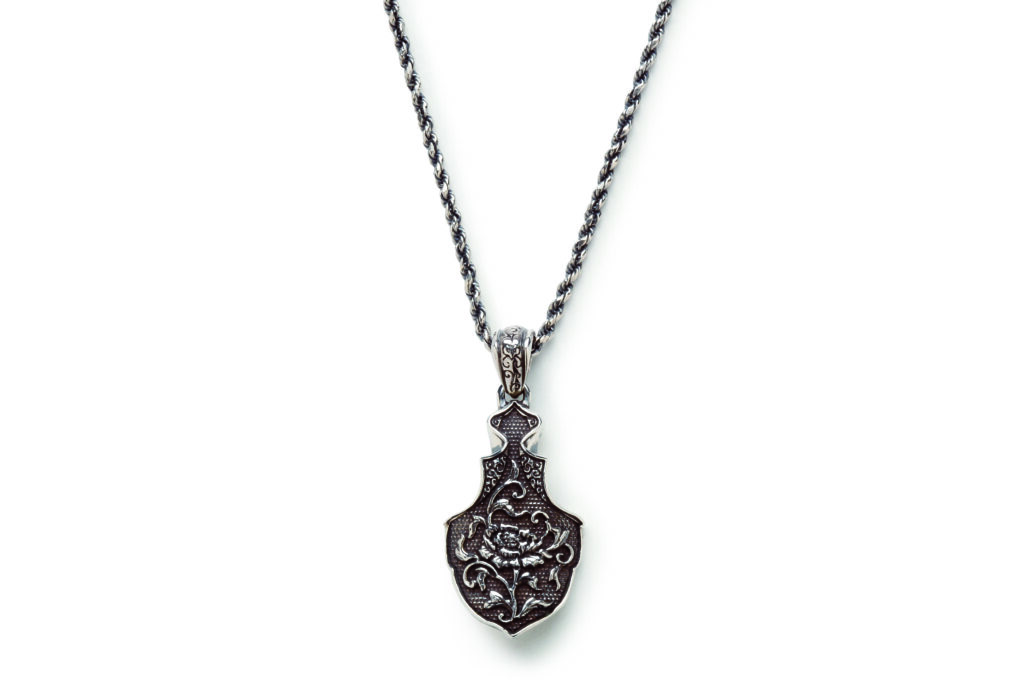
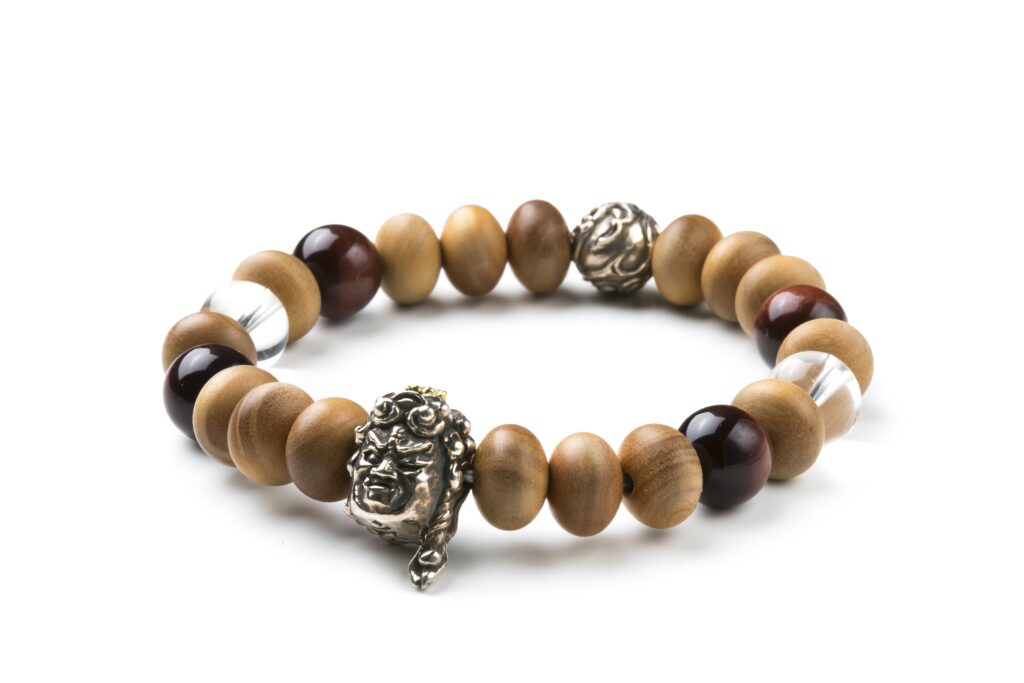
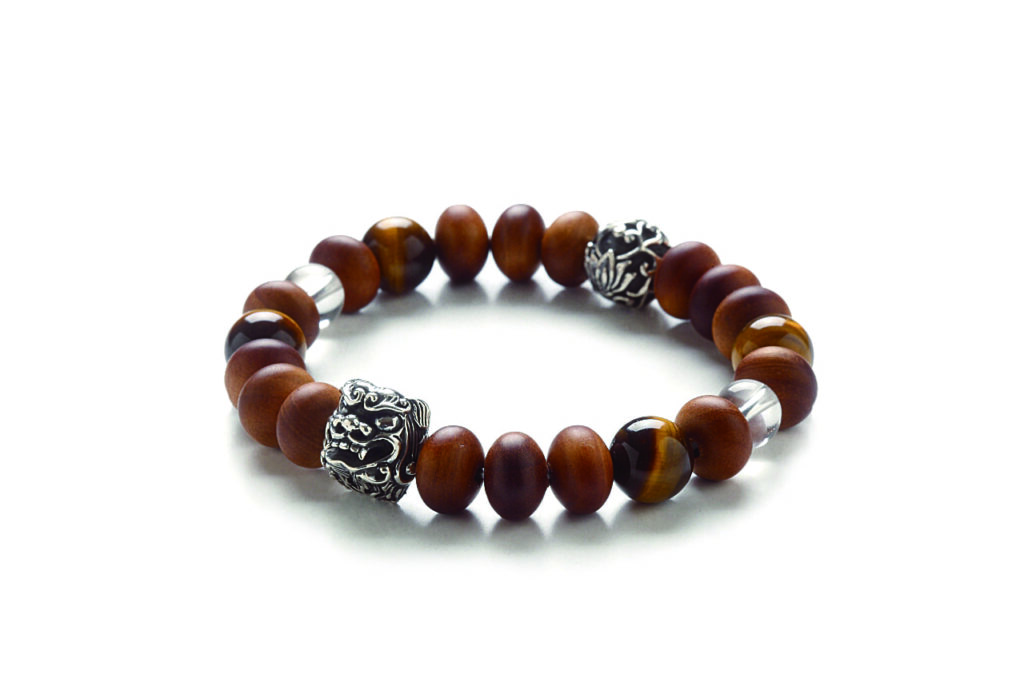
Peony
The antique look of this silver necklace was inspired by Buddhist metal ornaments. Known as the monarch of flowers, the peony is a symbol of splendid feminine beauty.
¥25,920
Fudo Myo’o
A splendid Buddhist rosary combining quality fragrant sandalwood, bloodstones and silver beads cast with the image of Buddhist god Acalanatha.
¥32,400
Lion
This Buddhist rosary combines beads of silver, Indian sandalwood and natural stones. One of the silver beads is engraved with a lion, a classic motif in Japanese art. Choose a natural stone from a selection including the twelve birthstones and onyx.
¥27,000
MUTSUMI
冨田工藝
Tomita Kogei
【Address】 京都市東山区五条橋東2-36-2
【Phone】 075-541-0123
www.tomita-k.jp

